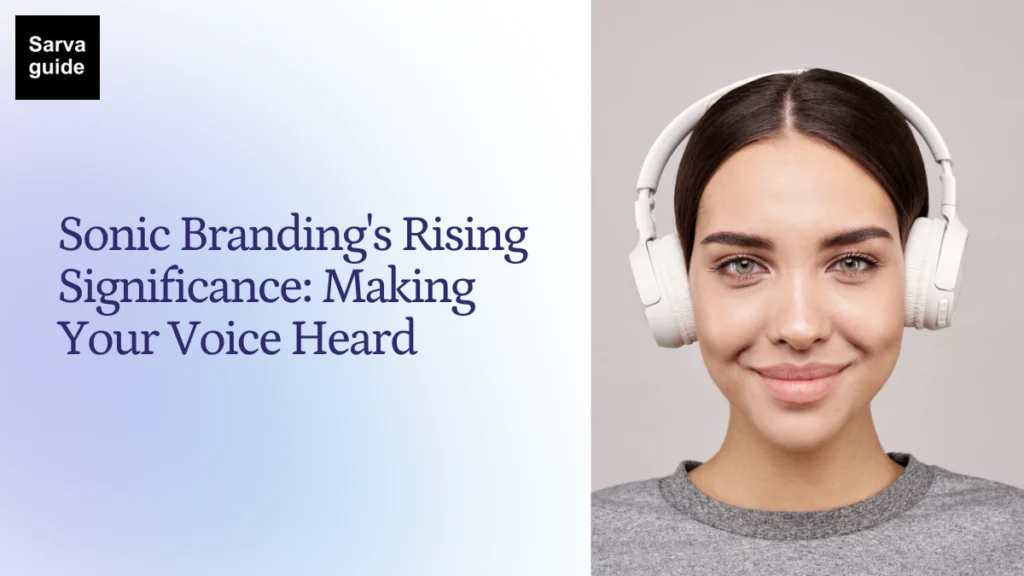|
Getting your Trinity Audio player ready...
|

Sound as part of branding strategies has been used for years and dates back to the famous jingles used on television and radio. In the course of time, the use of different sounds like Intel’s five-note “Bong” sound, State Farm’s “Like a Good Neighbour” audio signature, and Microsoft’s “The Wave” start-up sound are now part of larger sound-based branding strategies. The fierce competition and media fragmentation make it more difficult to establish brand awareness and associations through promotion and advertising than previously. Ultimately, marketers are becoming more sophisticated in developing strategies and getting legal protection for sounds associated with their brands.
Sonic branding is the application of music as an element of a brand’s identity. To better understand the ever-increasing quality of sonic branding, I spoke with John Taite, Executive Vice President of Made Music Studio. This firm specialises in sonic branding. They have developed sounds for brands ranging in size from Tostitos and Panera to HBO (see the following) and The NBA on ESPN and the sounds that come from Nissan Leaf.
In discussing the extent to which sonic branding has developed, Taite observes that “Sonic branding is a set of sound designs that causes people to feel a certain way about an experience or brand. Most people think of those short sonic logos or mnemonics they hear at the end of commercials – the AT&T chimes, Netflix, or bah-dah-bup-bup-bah. However, every brand of music or sound creates an impression on the consumer, including advertising, UX/UI music, and physical spaces. Taite adds, “Every company wants to increase recall, attribution, and appeal. So, we create their audio to provoke specific emotions. Being instantly identifiable is significant, but the true worth is when those memory triggers are activated when you make a purchase. If you’re purchasing an automobile or a candy bar, an element of emotional compulsion makes your decision seem right.”
In a highly crowded information environment, sonic branding can lift awareness/memorability and arouse emotions that prompt positive associations with a brand. “We often say that people think about what they see but feel what they hear,” Taite explains. Taite, “and within every brand’s core is a distinct emotion, an emotional reality that distinguishes them from. When we work with a brand, we become musicians by taking in their identity, goals, values, and hopes to discover their unique sound. We also look at the most crucial aspect of all – the perceptions of their clients. Sound can help make a brand relevant in people’s lives; therefore, context and cultural impact are crucial.”
Shop Now
Documenting the Success of Sonic Campaigns
There is evidence that suggests that sonic branding strategies are effective in increasing memorability or message and also in triggering purchases. Made Music Studio reports that one recent CPG client said 400% more sales after launching an identity system that sounded. The company has cited the success of campaigns, which increased the sales and awareness of many industries like automotive, telecommunications, consumer packaged goods technology firms, as well as entertainment and retail. The company also points to an IPSOS study that showed that advertisements using audio branding messages consistently receive an 8.5x increase in attention to brands.
Taite adds that sonic branding is more essential if a brand wants to reach younger consumers and cites a WPP Group study indicating that 75 percent of Gen Z consumers say music can make them feel more attached to the brand. To attract younger customers, he says, “We often design music-based campaigns that would not be possible without a client’s sonic message. It is the year Tostitos Summer Remix (#TostitosRemix) launched the brand’s musical components (made with their sounds) to allow fans to collaborate and make their music using TikTok. It’s not just an enormous success regarding views and engagement, but they might also have the biggest hit of the summer in their possession.”
Short-term vs. Long-term Considerations in Sonic Branding
Since goals such as creating legally protected assets that contribute to brand equity are essential to the brand, it is natural that sonic assets will be more valuable for a business than licensing a song or song over the long term. Taite says, “Licensing a famous song can help increase the impact of a brief campaign. But it’s not enough to match the effectiveness of a unique, sound brand asset you can control, safeguard, and extend across your company for a long time. We create our sonic identity to allow for expansion, and that’s one of the reasons they endure and create brand trust. Consumer behaviour is constantly evolving, and the experience for customers of contemporary brands is ever-growing. Therefore, your brand’s sonic identity must be flexible beyond traditional advertising to incorporate social media applications and sponsorships, podcast devices, experiences, voice assistants, and more. If we’ve done it well, your brand’s sound eventually enters the world of culture and becomes irresistible.”
Future Outlook
Sonic branding is transforming from a method many marketers employ to becoming a “must-have” for brands across all sectors. It’s not a surprise, considering how some businesses have made money on the popularity of songs that have lasted for a long time. The difference is that sonic branding has become more sophisticated. When done correctly, it can be integrated into the brand’s essence to the point that it is a crucial corporate asset.